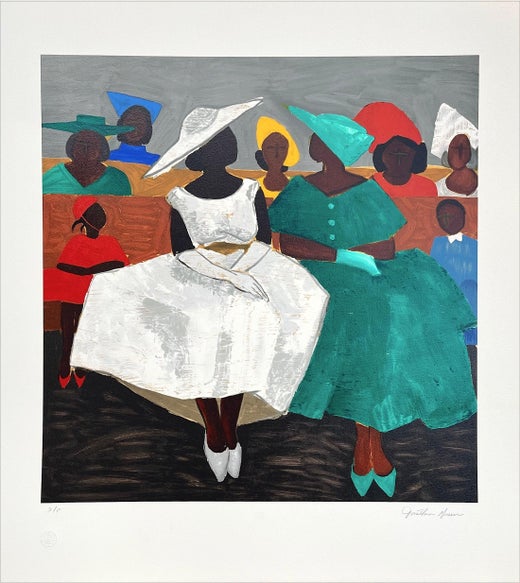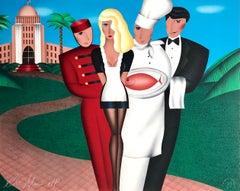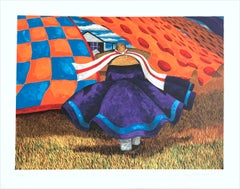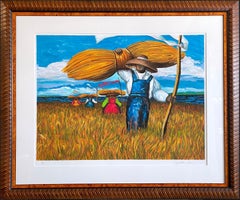Jonathan GreenGEECH Signed Lithograph, African American Gullah Geechee Culture Checkered Quilt2009
2009
About the Item
- Creator:Jonathan Green (1955)
- Creation Year:2009
- Dimensions:Height: 27.5 in (69.85 cm)Width: 34.5 in (87.63 cm)Depth: 0.125 in (3.18 mm)
- More Editions & Sizes:Edition 100Price: $3,475
- Medium:
- Movement & Style:
- Period:
- Condition:Pristine condition, never been framed or mounted, pencil signed P.P.(Printers Proof)aside from edition of 100 on lower margin, printers chop embossed on lower left, print documentation provided.
- Gallery Location:Union City, NJ
- Reference Number:1stDibs: LU83233571971
Jonathan Green
Jonathan Green is considered one of the most important contemporary painters of the Southern experience. The artwork of Green is heavily influenced by his Gullah heritage, with vividly colored paintings and prints documenting everyday chores, in addition to celebrating Gullah life’s rites of passage. By returning his art to his childhood upbringing, Green has created an autobiographical body of work, in addition to documenting a vanishing way of life. Jonathan Green's artwork has been exhibited across the United States and internationally. Additionally, his work is included in the permanent collections of several major museums.
You May Also Like
1930s Art Deco Portrait Prints
Lithograph
1950s American Modern Portrait Prints
Lithograph
Early 2000s Photorealist Landscape Prints
Lithograph, Offset
1980s American Realist Portrait Prints
Lithograph
1980s American Modern Landscape Prints
Lithograph
1860s American Modern Portrait Prints
Lithograph
1930s Art Deco Landscape Prints
Lithograph
1920s American Impressionist Portrait Prints
Lithograph
1910s American Realist Portrait Prints
Lithograph
1890s Art Nouveau Portrait Prints
Lithograph
More From This Seller
View All1980s Contemporary Portrait Prints
Lithograph
Early 2000s Contemporary Portrait Prints
Lithograph
1990s Contemporary Portrait Prints
Lithograph
1990s Contemporary Portrait Prints
Lithograph
1990s Contemporary Landscape Prints
Lithograph
1990s Contemporary Portrait Prints
Lithograph




